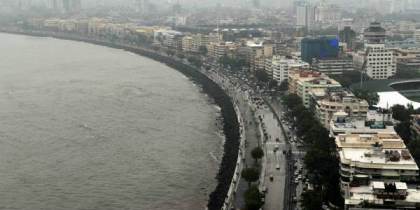Climate change isn’t just real we can see its effects in our own housing complex. As the rains lash Mumbai, it’s hard to ignore how the monsoon has changed. Instead of showers distributed across three or four months, we now have week-long bursts of downpour. And the city is simply not equipped to deal with such volumes of water.
Flooding occurs in neighbourhoods that never faced the problem before. As cars bob about in waterlogged parking lots and compound walls disintegrate, private townships are experimenting with flood-control mechanisms and hiring a growing tribe of experts to keep the worst effects of the monsoon at bay.
The challenges are considerable – all projects ultimately are part of the city’s infrastructure, its drainage systems, electricity grids and roadways. Deben Moza, Executive Director for Project Management Services at Knight Frank India said that the new, upcoming townships are typically designed or planned in isolation and don’t completely factor in the lack of infrastructure. We need better maintenance systems all around.
The best practices are those that work with existing systems to manage monsoon woes. In Chennai, Mahindra World City by Mahindra Lifespaces says they typically study local catchment areas and flooding levels. Using contour maps, they determine the depths of waterbodies and land levels. Deepak Suvarna, the Project Head confirms that the percolation pits are then planned accordingly, so that floodwater can be directed there if necessary.
In Nagpur, Radha Madhav Developers’ 111-acre township Vrindavan has 40 pumps on standby. Hardik Agarawal, the Chief Executive Officer said that the main issue then is maintenance of the pumps, because they are used only for a couple of times a year but it needs to be ensured that they will all be in working order when needed.
Bengaluru’s Radiance Realty also keeps submersible pumps on site, and has collection tanks in its basements.
Even as legislation has restricted the construction of buildings near flood plains, development pressures have led to mass urbanisation infiltrating sensitive areas. It is no longer uncommon to see massive townships built near water bodies, says Santhosh Kumar, vice chairman at Anarock Property Consultants. “This has led to the need for technological innovations that focus on minimising the impact of flooding.” What is really needed, adds Ramesh Nair, CEO and country head at realty research firm JLL India, is a crackdown on unorganised builders who continue to flout structural safety norms.
Source: Hindustan Times
Image Source: skymetweather.com

